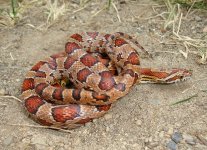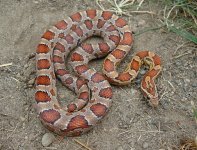I have the same kindof thing going on here...I am working with a few florida localities, for 3 years now. In may I had a clutch that hatched 2 babies that look as different from the others as eachother, they are keys. I now have a clutch from my collier county group, from which I have gotten anery A from, that are totally different. I will be line breeding in the future to produce ?, time will tell.
The thing with these are, and some will disagree with my methods, they to are from wild breedings. I have some funnel trap type cages that I use with selected females. This past spring I put the females at the locations in which they were collected to be bred. I do this to avoid inbreeding and to add diversity to capture the look I am going for. Which is some heavy black bordered locality similar to okeetee but totally different, and from south florida! So far so good.
After the males are attracted, all data is collected. Such as locale, pics, weights, defication and swabs(which are labed). Then the males released to go about thier way. This year one of my female keys was with 2 seperate males, and produced what I think may be caramel offspring. Some of the people on here think aney, based on photos. Time will tell. My collier female was with a single male and produced some almost banded anery with blue eyes and a possible hypo red with blue eyes. So now I have the chore of working these out, as well as continuing with my origional goals. Fun fun...I love this stuff
!
All of the females that participate are labed as well and so far I have not had any issues at all with any of them.
Anyway, finding a possible new geno is fun and exciting. Even if it proves to be a poly morph of known genetics. With the ontogenetic changes of the classic corn being so diverse...sometimes even the old can be new and exciting!
Just some thoughts,
Mark












